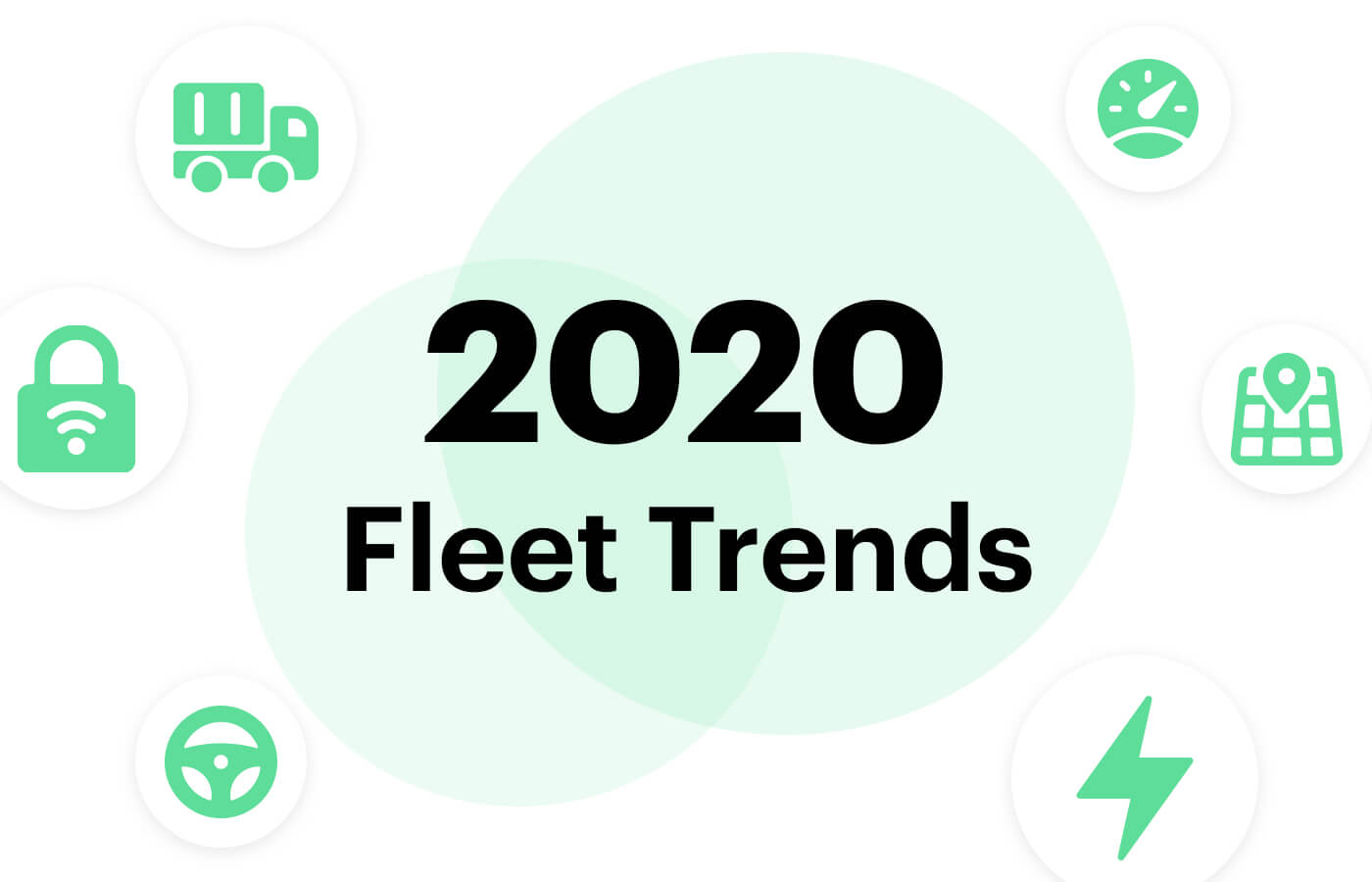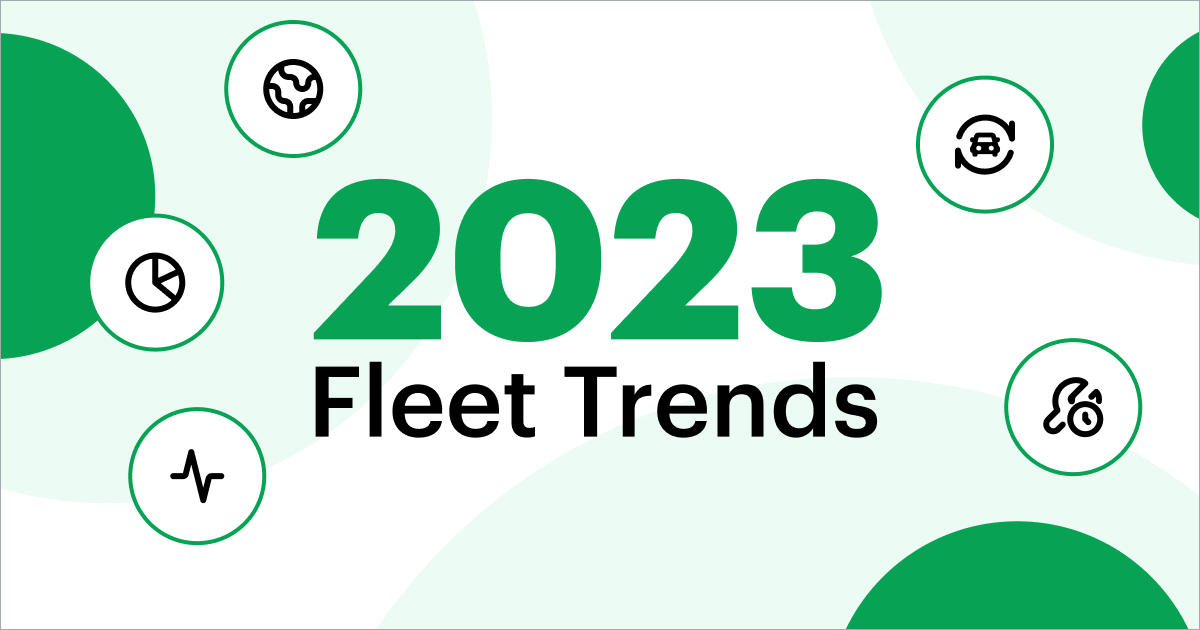The fleet industry is in a constant state of rapid growth. As technology advances, it’s critical to keep up with the latest fleet trends to maximize your fleet’s efficiency. Here are some fleet trends to look out for in 2020.

Looking for the top 2021 fleet industry trends? Check them out here.
2020 Fleet Industry Trends
The fleet industry saw a wealth of technological advancements in 2019, and 2020 will be no different. As more fleet professionals are adopting new processes to improve fleet efficiency and return on investment (ROI), it’s becoming more important to stay informed of the latest fleet trends. Here’s our forecast of the top fleet trends to keep an eye on in 2020.

Embracing Fleet Data and Technology
As technology becomes more readily accessible, companies are seeing the value of data and how leveraging it can improve processes and maximize efficiencies. From GPS and telematics to maintenance and expenses, technology provides solutions to many common problems fleet managers face daily.
All fleet managers aim to be as productive as possible in the workday, but trying to manage drivers and keep up with data entry can leave you thinly stretched. Paper processes and legacy systems result in hours of time-consuming data entry, making it hard to glean any relevant data or take a proactive approach to management.
Automating fleet processes through software enables managers to eliminate hours of data entry and collects it in an organized fashion to improve processes and analysis. Having time for proper analysis gives fleet managers a chance to improve operations and the company’s bottom line.
Each day, technology is improving ways to connect people, organizations and processes. In the fleet industry, having a way to connect with your drivers and gather data no matter where your vehicles are on the map is invaluable.
While adopting a new process may seem intimidating, strong fleet technology is intuitive and easy to implement. Most fleets are using some form of modern technology to aid management, whether it be telematics devices or fuel cards. Fleet software consolidates all fleet data into one system to allow managers an easy way to track their fleet.
Data Security
Because fleet data is more accessible than ever, data security and privacy have become a chief concern for executives and fleet managers alike. Taking steps toward securing sensitive information lowers your risk of any data breaches and provides much-needed peace of mind.
Vehicle connectivity through tools like GPS, telematics and electronic logging devices (ELD) have vastly improved the way fleet managers receive information about their vehicles and drivers. These devices have enabled managers to get a comprehensive look at fleet health, performance and safety.
While these productive tools are a massive improvement over the paper-processes and guesswork of the past, electronic fleet data can be vulnerable. It’s important to have a plan to secure all data.
Managing your data in cloud-based fleet management software ensures your data is safely encrypted. For internal security, fleet managers can manage user permission levels to safeguard sensitive information.
That said, the best security measures your team can take are common sense (but they always bear repeating). Train your team to never share passwords, secure mobile devices and consistently update software to mitigate the risk of cyberattacks.

GPS & Telematics
Though most fleets utilize some form of telematics tool for vehicle tracking, some fleets aren’t currently leveraging telematics data to its fullest extent. As fleet managers continue to embrace data to improve their fleet, telematics will continue to be a core focus in the industry.
Telematics tools provide a way to take a proactive approach to fleet management by receiving real-time vehicle updates. This ensures fleet managers are immediately alerted to issues and start the maintenance process.
Augmenting telematics data with fleet software, enables fleet managers to receive real-time updates on odometer readings, diagnostic trouble codes (DTC), vehicle performance and driver behavior.
Automatic telematics data capture eliminates hours of data entry and greatly reduces the margin for error in regards to accuracy. It also increases fleet efficiency by enabling fleet managers to track data trends across their fleet.
Improving Driver Behavior
In addition to tracking vehicle location and maintenance issues, GPS and telematics tools have become a way for fleet managers to monitor driver safety and improve accountability. Real-time location tracking remains to be a prime focus for fleet managers.
Telematics tools provide a way to monitor driver productivity and uphold safety standards. Certain telematics devices have safety features to improve driver behavior, including real-time safety alerts that allow drivers to correct actions on the road.
This also allows fleet managers insight into driver performance, including speeding, harsh braking and tailgating. Identifying poor driver behavior allows managers the opportunity to correct conduct on the road, resulting in fewer accidents and fines.

Fleet Electric Vehicles
We continue to see an increasing amount of fleets interested in electric vehicles (EV). Plans for EV adoption are steadily gaining momentum as the technology becomes more affordable.
Both executives and fleet managers see numerous benefits to EV adoption, ranging from reducing carbon emissions to improving their fleet’s bottom line. Not only are electric vehicles better for the environment, but industry professionals are also intrigued by a decrease in repairs and the elimination of fuel costs.
To stay ahead of the curve and take advantage of the benefits, fleets should start making an EV implementation strategy. Take into consideration important factors like maximum route ranges and your fleet’s current total cost of ownership (TCO).
Compiling asset utilization and telematics data in fleet management software can give you an idea of the types of batteries your vehicles will require when you make the switch. It’s also critical to understand your fleet’s TCO to calculate future operating costs when it comes to maintaining electric vehicles.
Preparing for Autonomous Vehicles
Perhaps the most interesting fleet trend is the growing capabilities in autonomous vehicle (AV) technology. Manufacturers are investing increasing amounts of time and effort into developing AV, and the opportunities for fleets have managers both hopeful and excited.
One of the major benefits of AV is the increased level of productivity for fleet managers and their operators. Even with semi-autonomous vehicles, operators would have more opportunities to complete other tasks, as well as communicate with managers and customers.
Fleet managers see AV technology as a means to improve processes and provide a potentially safer experience for operators. It could also be an opportunity to give drivers breaks throughout their route, improving both productivity and worker happiness, an important factor in future employee recruitment.
While the technology is still in development, the conversation around the possibilities of autonomous vehicles remains to be one of the more exciting topics surrounding fleet.
Prepare for these advancements by leveraging your fleet data in Fleetio! Start a free trial or request a demo today.



